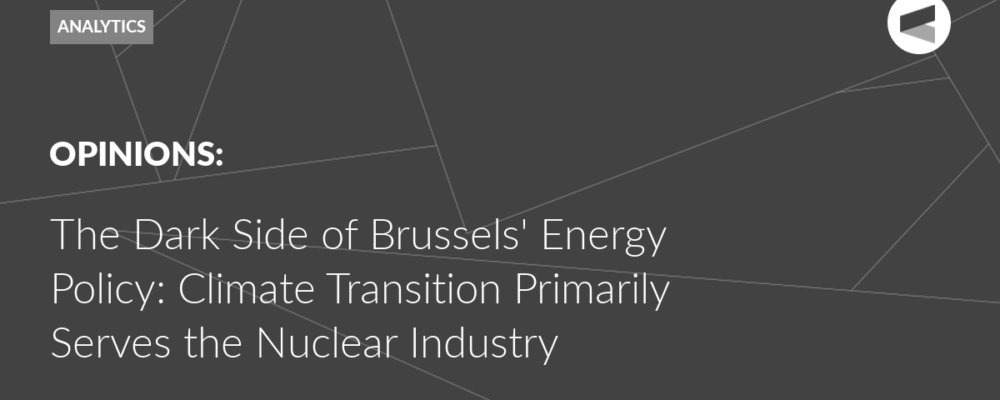The accumulation of discoveries and innovations in history takes time, but their rapid development and widespread implementation – sometimes reaching revolutionary proportions – usually begins during and after crises (and during conflicts). At the moment, the world has emerged from the Covid-19 economic crisis, but it is in a state of geopolitical overstrain. This is the best time to find technological solutions to business-related, national and global problems, as well as accelerate economic growth, writes Leonid Grigoryev for the 21st Annual meeting of the Valdai Discussion Club.
Economic growth has generally slowed in the 2020s, and the IMF’s forecasts for the next five years are below normal. In the context of a rethinking of the state of the global economy and its prospects, a search is underway for
ways to dynamize growth. The achievements of artificial intelligence (hereinafter AI) act both as a toy for scientists and enthusiasts, and as a means of finding profits in the future. But the most important hope for politicians is to push growth or at least promise growth soon.
Hope for the AI Revolution entails several hopes for different revolutions. Enthusiasts of progress in general and, naturally, specialists in generative artificial intelligence (intellectual sections – hereinafter Gen AI) are delighted with the new opportunities, and individually hope for patents and income. Students and graphomaniacs have perked up, and charlatans have gotten a chance to cover up their ignorance in high intellectual fashion … Many progressive figures have additional hope for progress in solving global problems in connection with electrification, the management of complex processes and climate programmes. The consulting trade did not miss the moment to create a fashion and moved on to creating exciting scenarios.
Business responded with hope, launching a strong, all-encompassing talent-hiring and innovation-spending drive in 2022. However, it slowed down in 2023 and seems to have moved to high medium-term investment rates.
Goldman Sachs showed objectivity by hosting a discussion on AI.
According to 2023 data, job postings for technology specialists have fallen by 26%, but their growth in 2022 was so intense that they grew by 8% for two straight years. But there is one exception: demand for generative AI specialists has maintained its growth rate: 110% and 111%.
What are the estimates of the expected practical benefits of AI – a year ago and now? The global market in 2022 was valued at $136 billion, and is projected to grow to $1.8 trillion by 2030. According to Statista, the market was valued at $207 billion in 2023, and will reach $298 billion by the end of 2024. A year ago, one large company expected AI productivity to grow 1.5 percent per year and 15% over ten years. However, by the spring of this year, it had already postponed this boom to a later date, without specifying the parameters more precisely. McKinsey in July 2023 gave the following estimate: “Our recent research estimates that additional revenue from generative AI could add the equivalent of $2.6 to $4.4 trillion annually across the 63 potential use cases we analysed… About 75 percent of the value that Gen AI could generate was in four areas: customer operations, marketing and sales; software development; and R&D.”
We can characterise these estimates as an early fashion that turned high expectations into hope for a revolution – plus a few percent additional growth in global GDP annually in the near future, which would be very welcome.
By the spring of 2024, the “heavy academic artillery” was brought in to support the decline in AI spending dynamics and the assessment of the effects of artificial intelligence on the macroeconomy. A complex model analysis by Professor Daron Acemoglu, now a Nobel laureate, based on transparent premises and assumptions (and not related to the fact that the dynamics of AI growth indicators decline in 2023) gave very moderate estimates of future effects. He estimates the growth of overall labour productivity over the next ten years in the range of 0.53 – 0.66% for the entire period, and a slightly higher GDP growth figure. However, he believes that there may also be negative effects for certain groups of workers, a reduction in inequality is unlikely, etc. The Nobel laureate even jokes at the end of his work: “It remains an open question whether we need basic models … that could engage in conversations like people and write Shakespeare’s sonnets if we want reliable information useful for educators, health professionals, electricians, plumbers, and other crafts.” Let’s note that he considers the effect of AI on the economy “non-trivial” in this case as well. Of course, the model assessment will be adjusted in accordance with the real conditions of economic growth and technological breakthroughs.
Generative AI remains a leader among innovations, actively influencing many areas. During periods of new technological breakthroughs, international competition immediately arises. This entails: loading one’s talents (a social problem) and obtaining advanced results both for solving difficult technical and economic problems, increasing efficiency and productivity and, if possible, exporting. But this depends on the willingness of firms, universities, banks and government budgets to take on financial, scientific and prestige risks. It is necessary to prepare students who are complementary and focused on multidisciplinary competencies. Then they will be able to increase labour productivity and GDP due to the growth of AI, but they have enough specific skills to avoid being replaced.
The early phase of the new innovation cycle creates great opportunities for using national human resources for inventions in the field of Gen AI, application and dissemination. This has been the case with all previous innovation waves. Accordingly, direct or indirect commercial or geopolitical competition involves monitoring global achievements and breakthroughs, finding their own points of advantage and the organized use of effective elements. or rather, systems of AI. Today, it is known that China is a leader in many indicators, and India has its own advantages.
Among developed countries, investments in AI have turned out to be another area where the EU lags behind the US. McKinsey published an article this fall: “… In 2023, private investment in AI in the US reached $67 billion, compared with only $11 billion in Europe … In 2023, private investment in AI in the US amounted to $23 billion, compared with only $2 billion in Europe.”
In Russia, there is a huge interest in this field, particularly in education. There is a noticeable tendency to highly value employees with relevant competencies in the labour market, especially those who know how to use AI. The Artificial Intelligence Competence Centre of the National Technology Initiative, based at MIPT, has estimated the market at 647 billion rubles in 2022.
Gen AI will be driven by various sources of necessity and competition – no one wants to be late. The expected breakthroughs could prove to be profitable. However, both private and public funds will be needed to catch the moment when a myth suddenly turns out to be a chance for success, a solution to a complex problem, or promise a good income. A sharp acceleration of overall economic growth due to AI has not yet been realized, although the slowdown in AI spending in 2023 will most likely be overcome. Information about future benefits from AI, which flows from countless interviews, polls, and reviews, usually contains reservations that these are only scenarios (not forecasts). But they still point to 1-1.5% productivity growth (higher in developed countries) in the future, and a significant increase in investments in AI – closer to 2030 and beyond.
The revolution in
overall economic efficiency with the help of AI is probably still a long way
off. Generative AI, however, is not a myth, but a highly competitive sphere of
application of human genius. An amazing era is just beginning, and much lies
ahead. People are actively creating assistants and deputies for themselves, and
perhaps competitors not only in the chess of accounting, but in an increasingly
wide range of fields. Isaac Asimov’s Three Laws of Robotics have become quite
relevant. Let’s remain vigilant and competitively oriented!
The Valdai Discussion Club was established in 2004. It is named after Lake Valdai, which is located close to Veliky Novgorod, where the Club’s first meeting took place.
Please visit the firm link to site






